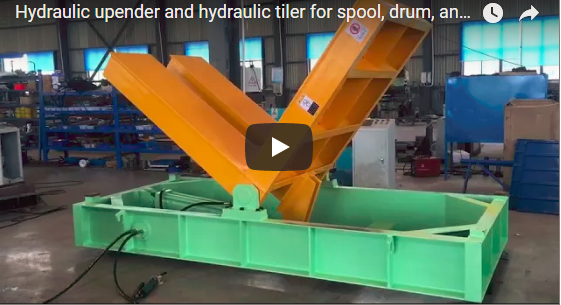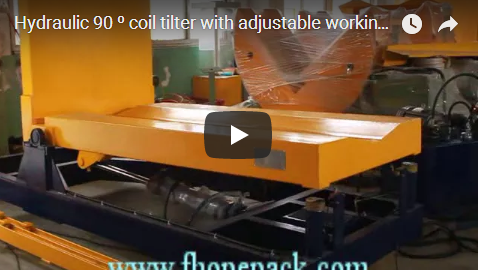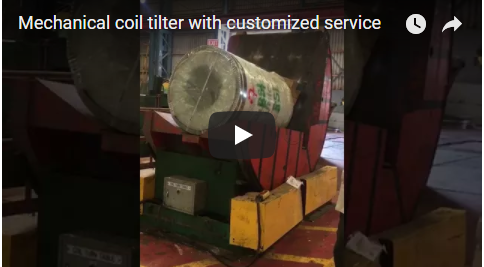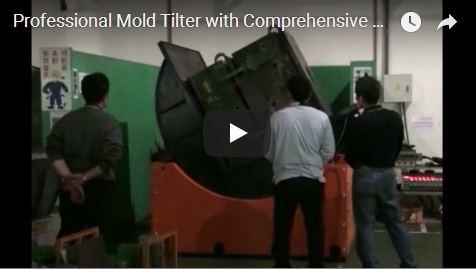Enhancing Material Handling Safety and Efficiency: A Technical Overview of Coil Tilters and Upenders
Handling heavy, cylindrical loads like steel coils, paper rolls, or large molds presents significant challenges in industrial environments. Manual or improper handling increases the risk of workplace injuries, damages valuable materials, and slows down production workflows. Coil tilters and coil upenders are specialized material handling equipment designed to address these challenges by safely and efficiently rotating heavy loads, typically by 90 degrees, between vertical and horizontal orientations.
1. Understanding the Mechanism: Coil Tilter/Upender Functionality
A coil tilter (often used interchangeably with coil upender) is a machine engineered to change the orientation of large, often cylindrical or palletized loads. Its primary function is to rotate items from an "eye-to-the-sky" (vertical bore) position to an "eye-to-the-horizon" (horizontal bore) position, or vice versa. This capability is crucial for various industrial processes, including loading/unloading transport, positioning for machine feeding, storage optimization, and facilitating inspections or further processing.
The following video demonstrates a typical coil tilter in operation, showcasing its controlled rotation and robust construction:
2. Key Operational Principles and Drive Systems
Coil tilters typically operate using one of several drive mechanisms, depending on the specific model, capacity, and application requirements:
- Hydraulic Systems: Often used for heavy-duty applications, hydraulic cylinders provide powerful and smooth tilting motion. They offer high load capacities but require hydraulic power units and associated maintenance.
- Electromechanical Systems: Utilizing electric motors coupled with gear reducers, screw jacks, or chain drives, these systems offer precise control and are generally easier to integrate with automated systems. They eliminate the need for hydraulic fluids.
- Gear Motor Drives: Robust gear motors provide reliable torque for rotation, suitable for a wide range of capacities.
The tilting platform, often V-shaped or flat with adjustable supports, securely holds the load during the rotation cycle. Control is typically managed via a push-button pendant, remote control, or integrated into a larger automated control system (PLC).
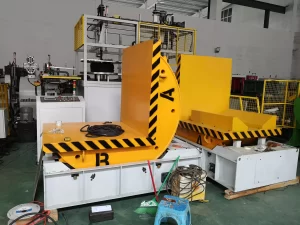
3. Core Technical Specifications to Consider
When evaluating or specifying a coil tilter/upender, several technical parameters are critical:
- Load Capacity: Ranges widely from under 1 ton to over 50 tons, determined by the heaviest load anticipated.
- Platform Size & Configuration: Must accommodate the dimensions (diameter, width) of the coils or loads being handled. Options include V-saddles for coils, flat platforms for pallets/molds, or custom designs.
- Rotation Angle: Standard is 90 degrees. Some models offer 180-degree rotation for inverting loads.
- Rotation Speed: Typically controlled for smooth, safe movement, often adjustable. Cycle times vary based on size and drive system.
- Power Requirements: Voltage, phase, and power consumption (kW or HP) depending on the drive system (e.g., 480V/3Ph/60Hz).
- Control System: Options range from simple manual controls to fully programmable logic controllers (PLCs) for integration into automated lines.
- Safety Features: Essential elements include:
- Emergency stop buttons
- Limit switches to control rotation endpoints
- Mechanical locking mechanisms in case of power failure (especially hydraulic)
- Safety railings or light curtains (optional)
- Overload protection
4. Diverse Applications Across Industries
While commonly associated with the steel industry, coil tilters find application in numerous sectors:
- Steel & Metals: Handling steel, aluminum, or copper coils for slitting, annealing, stamping, or shipping.
- Paper & Printing: Rotating large paper rolls for printing presses or converting lines.
- Wire & Cable: Positioning large spools or reels for winding/unwinding operations.
- Manufacturing: Tilting heavy molds or dies for maintenance, storage, or press loading.
- Automotive: Handling engine blocks, transmissions, or other bulky components.
- Logistics & Warehousing: Optimizing storage and handling of palletized or cylindrical goods.

automatic coil upender 5. Key Benefits in Industrial Operations
Integrating coil tilters/upenders into material handling processes yields significant advantages:
- Enhanced Safety: Dramatically reduces the risks associated with manually attempting to reposition heavy, unstable loads, minimizing potential crush injuries or strain.
- Improved Efficiency: Speeds up the process of changing load orientation compared to using cranes with complex rigging or manual methods.
- Product Protection: Smooth, controlled rotation prevents damage to sensitive materials like rolled steel edges or paper roll surfaces that can occur with improper handling.
- Operational Versatility: Enables efficient interfacing between different handling equipment (e.g., forklifts requiring horizontal pickup, cranes lifting vertically).
- Workflow Integration: Can be seamlessly integrated into automated production or packaging lines.
6. Selection and Operational Considerations: Experience Insights
- Matching Machine to Load: Carefully assess maximum load weight, dimensions (min/max diameter and width), and required orientation changes. Over-specifying capacity can be costly, while under-specifying is dangerous.
- Installation Environment: Consider floor space, foundation requirements (especially for high-capacity units), and necessary power supply access.
- Operator Training: Ensure personnel are properly trained on safe operating procedures, load centering techniques, and emergency protocols.
- Maintenance Schedule: Regular inspection and maintenance (lubrication, hydraulic fluid checks, inspection of structural components and drive systems) are crucial for longevity and safe operation, following manufacturer recommendations.
- Throughput Needs: Evaluate cycle time requirements to ensure the selected tilter can keep pace with production demands.
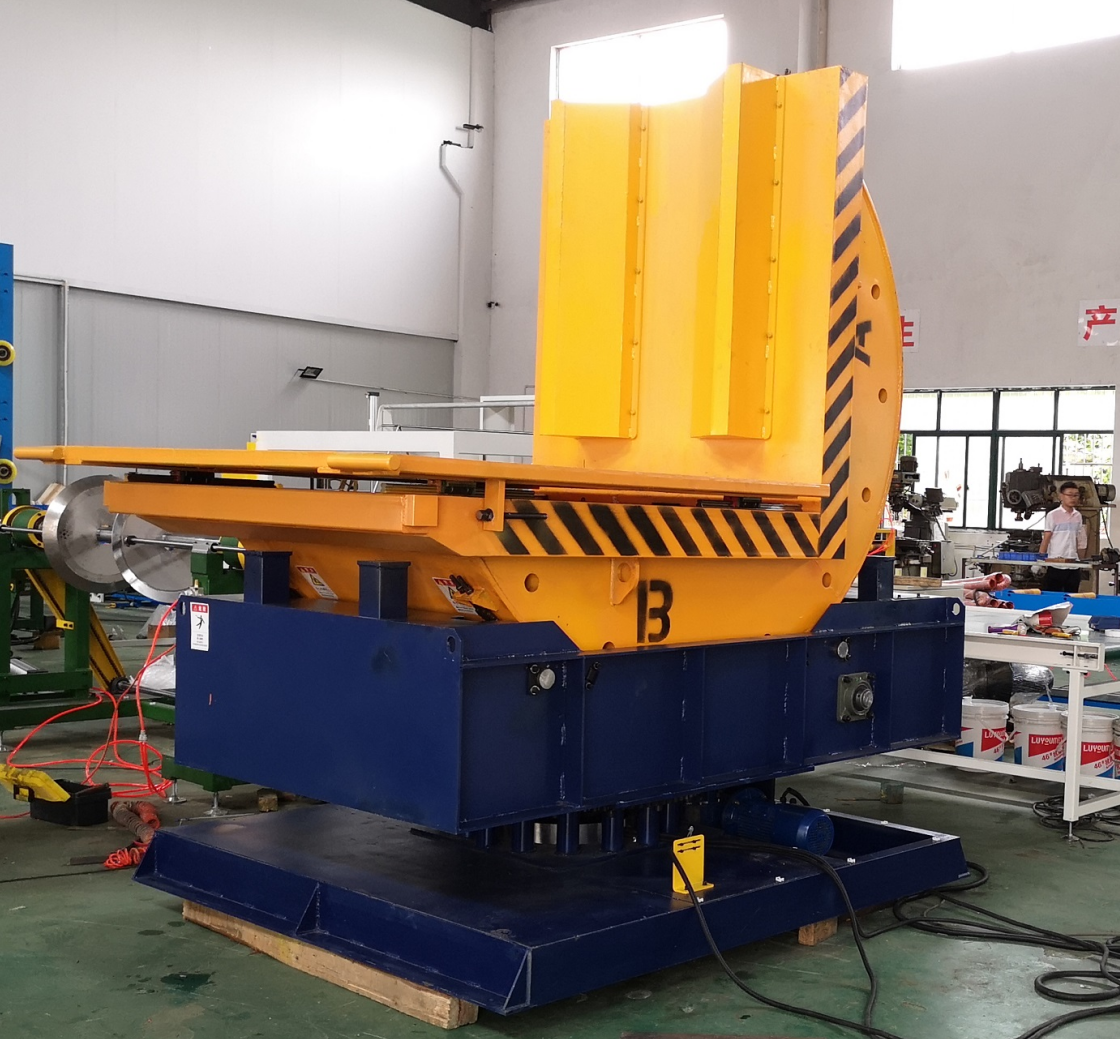
rotating coil upender Conclusion
Coil tilters and upenders are indispensable tools in modern industrial material handling. By providing a safe, efficient, and reliable method for rotating heavy loads, they contribute significantly to operational productivity, worker safety, and product integrity. Careful consideration of technical specifications, application requirements, and operational best practices ensures the successful implementation of this valuable equipment.
For further details on specific models and configurations:
https://www.fhopepack.com/Coil_upender.html

